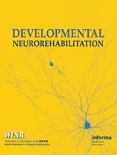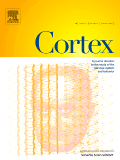
Journal of Neurorestoratology
Scope & Guideline
Exploring the frontiers of neuro-restorative techniques.
Introduction
Aims and Scopes
- Neurorestoration Techniques:
The journal emphasizes various neurorestorative techniques, including cell therapy, deep brain stimulation, and rehabilitation methodologies that aim to repair and regenerate nervous tissue. - Neurorehabilitation Strategies:
A core focus is on developing and evaluating rehabilitation strategies for neurological disorders, including stroke recovery, spinal cord injuries, and other neurodegenerative diseases. - Mechanisms of Neuroplasticity:
Research on the underlying mechanisms of neuroplasticity is a significant area, exploring how the brain reorganizes itself functionally and structurally in response to injury or disease. - Translational Research:
The journal encourages translational research that bridges laboratory findings with clinical applications, aiming to implement new therapies and technologies in patient care. - Emerging Technologies in Neurorestoration:
The incorporation of innovative technologies, such as brain-computer interfaces and virtual reality, in neurorestorative practices is a unique contribution of the journal.
Trending and Emerging
- Neuroinflammation and Immune Response:
There is a growing interest in understanding the role of neuroinflammation and the immune response in neurological disorders, highlighting the potential for therapeutic targets in managing these conditions. - Role of Non-coding RNAs:
Research on long non-coding RNAs and their influence on neurological diseases is gaining traction, suggesting new avenues for understanding mechanisms of disease and potential therapeutic interventions. - Integration of Technology in Rehabilitation:
The application of technologies such as virtual reality and brain-computer interfaces in neurorehabilitation is trending, reflecting a shift towards more interactive and engaging rehabilitation strategies. - Personalized Medicine Approaches:
An emerging theme is the emphasis on personalized medicine in neurorestoration, tailoring treatment plans based on individual patient profiles and genetic backgrounds. - Holistic and Multidisciplinary Approaches:
There is an increasing trend towards holistic and multidisciplinary approaches in neurorestoration, incorporating mental health, physical rehabilitation, and lifestyle modifications to enhance recovery outcomes.
Declining or Waning
- Traditional Rehabilitation Methods:
There has been a noticeable decline in studies focusing solely on traditional rehabilitation methods, as newer, more innovative approaches are being prioritized in the current research landscape. - Basic Animal Studies:
Research centered on basic animal studies without direct translational implications appears to be decreasing, as emphasis shifts towards studies with clear pathways to clinical application. - Pharmacological Approaches:
The focus on pharmacological treatments for neurorestoration is waning, possibly due to the increasing interest in non-invasive and integrative therapies that focus on promoting neuroplasticity.
Similar Journals

Developmental Neurorehabilitation
Fostering interdisciplinary dialogue in developmental care.Developmental Neurorehabilitation is an esteemed journal published by Taylor & Francis Inc, dedicated to advancing the field of developmental neuroscience and rehabilitation. With an ISSN of 1751-8423 and an E-ISSN of 1751-8431, this journal serves as a vital resource for researchers, clinicians, and students interested in innovative therapeutic approaches and rehabilitation techniques for children and adolescents. Since its inception in 1997, Developmental Neurorehabilitation has focused on disseminating high-quality research, contributing to a deeper understanding of recovery processes in developmental disorders, and facilitating interdisciplinary dialogue among professionals. With its recognition in Q2 and Q3 quartiles across prominent categories such as Pediatrics and Rehabilitation, it stands out as a pivotal publication in its field, boasting Scopus rankings that reflect its significant impact—ranked #53 in Rehabilitation and #139 in Pediatrics, among others. While maintaining a commitment to quality research, the journal does not currently offer open access but remains accessible through institutional subscriptions, further enriching the academic landscape with critical insights into rehabilitation methodologies for developmental challenges and promoting better clinical practices to improve patient outcomes.

BRAIN RESEARCH
Your gateway to cutting-edge neuroscience research.BRAIN RESEARCH is a premier journal published by Elsevier, specializing in the intricate domains of neuroscience, developmental biology, and molecular biology. Established in 1966, this esteemed publication has become a cornerstone for researchers, professionals, and students dedicated to advancing our understanding of brain function and disorders. With an impressive impact factor and a consistent presence in the Q2 quartiles across key categories—such as Developmental Biology, Neurology, and Neuroscience—it stands out as an essential resource for disseminating innovative research and pioneering insights. The journal's scope encompasses both clinical and fundamental studies, fostering a multidisciplinary approach to the complexities of neural systems. Although it is not an open-access journal, BRAIN RESEARCH provides a vital platform for sharing progressive findings that can inspire future studies and contribute significantly to the evolutionary discourse in neuroscience. Based in the Netherlands, at RADARWEG 29, 1043 NX AMSTERDAM, BRAIN RESEARCH continues to shape the landscape of neuroscience research, inviting submissions that explore the latest discoveries and therapeutic strategies.

AIMS Neuroscience
Bridging disciplines in the dynamic world of neuroscience.AIMS Neuroscience is an esteemed open-access journal published by the American Institute of Mathematical Sciences (AIMS), dedicated to advancing the field of neuroscience since its inception in 2014. With a robust ISSN of 2373-8006 and an E-ISSN of 2373-7972, this journal aims to provide a platform for innovative research and scholarly discourse that spans the diverse and dynamic landscape of the neuroscience discipline. As of 2023, it holds a respectable Q3 category ranking in the miscellaneous neuroscience field and ranks #65 out of 113 in general neuroscience according to Scopus, positioning it in the 42nd percentile for impact. AIMS Neuroscience encompasses a broad scope of topics, from neurobiology and cognitive neuroscience to computational models and neuroengineering, making it a vital resource for researchers, professionals, and students alike. The journal's commitment to open access ensures that cutting-edge research is freely available, fostering collaboration and knowledge sharing within the global neuroscience community.

Brain and Spine
Fostering interdisciplinary dialogue for groundbreaking neurological discoveries.Brain and Spine is a premier academic journal published by ELSEVIER, dedicated to advancing the fields of neuroscience and neurology. With its unique focus on the complex interactions between brain function and spinal health, this journal serves as an essential resource for researchers, clinicians, and students alike. Though currently lacking an official impact factor, its ranking within Scopus highlights its relevance, placing it in the 25th percentile for neuroscience (miscellaneous) and the 23rd percentile within neurology, indicating that while it is a developing journal, it holds potential for significant contributions to the field. Operating under open-access principles, it aims to disseminate valuable findings widely, ensuring that novel insights into neurological health are accessible to a global audience. Brain and Spine seeks to foster interdisciplinary collaboration and innovation, making it an invaluable platform for those striving to enhance our understanding of the brain and spinal cord's intricate functions and interdependencies.

RESTORATIVE NEUROLOGY AND NEUROSCIENCE
Driving Discovery: Elevating the Standards of Neurological CareRESTORATIVE NEUROLOGY AND NEUROSCIENCE, published by IOS PRESS, is a premier journal dedicated to advancing the fields of neurology and neuroscience. Since its inception in 1989, this journal has played a crucial role in disseminating cutting-edge research findings and innovative therapeutic approaches that aim to restore neurological function and improve patient outcomes. With a focus on developmental neuroscience and clinical neurology, the journal holds a 2023 Scopus ranking of #129 out of 400 in clinical neurology, and #15 out of 37 in developmental neuroscience, reflecting its significant influence in these domains. Although it operates on a non-open access model, RESTORATIVE NEUROLOGY AND NEUROSCIENCE offers valuable insights for researchers, healthcare professionals, and students seeking to deepen their understanding of neural restoration mechanisms and therapeutic strategies. Located in Amsterdam, Netherlands, the journal continues to foster scholarly dialogue and innovation, contributing to the global advancement of neuroscience and neurology.

Zeitschrift fur Neuropsychologie
Connecting Scholars and Practitioners in NeuropsychologyZeitschrift für Neuropsychologie, published by HOGREFE AG in Switzerland, stands as a vital resource for scholars and practitioners in the fields of neuropsychology, cognitive neuroscience, and psychiatry. With an ISSN of 1016-264X and E-ISSN 1664-2902, this journal aims to disseminate high-quality research that enhances understanding of cognitive processes and their implications for mental health. While currently classified in the fourth quartile across relevant categories, including Cognitive Neuroscience and Neuropsychology, it offers valuable insights that contribute to the emerging discourse in these areas. By publishing both empirical studies and theoretical papers, it encourages interdisciplinary dialogues among researchers and clinicians. Although the journal is not Open Access, its role in advancing neuropsychological research is significant, fostering academic linkages from its base in Bern, Switzerland. By continually focusing on the latest advancements and fostering innovative approaches within the field, Zeitschrift für Neuropsychologie remains a crucial platform for those committed to exploring the complexities of the human mind.

NEUROPSYCHOLOGICAL REHABILITATION
Championing Innovative Approaches in Neuropsychological RehabilitationNEUROPSYCHOLOGICAL REHABILITATION is a prestigious peer-reviewed journal dedicated to the field of neuropsychology and rehabilitation. Published by Routledge Journals, Taylor & Francis Ltd, it stands at the forefront of research and development in applied psychology, arts and humanities, and rehabilitation, boasting an impressive impact factor and a distinguished ranking within various academic categories. With a strong commitment to advancing the science of rehabilitation and cognitive recovery, the journal aims to provide a platform for innovative research, systematic reviews, and clinical findings that inform best practices in the field. As it converges into its third decade of publication—from 1991 to 2024—NEUROPSYCHOLOGICAL REHABILITATION remains essential for researchers, clinicians, and students seeking cutting-edge insights and methodologies to enhance patient care and cognitive rehabilitation strategies.

CORTEX
Fostering Interdisciplinary Collaboration in NeuroscienceCORTEX is a premier international journal published by Elsevier Masson, focusing on the cutting-edge areas of cognitive neuroscience, psychology, and neurology. With an impressive impact factor that places it in Q1 quartiles across multiple categories such as Cognitive Neuroscience and Neuropsychology, this journal serves as a vital resource for researchers, clinicians, and students alike. Established in 1964, CORTEX has continued to excel in disseminating high-quality scholarly work, offering insights that significantly enhance our understanding of the brain's functioning and behavior. Although not an open-access publication, it provides various access options to ensure the dissemination of knowledge is as wide-reaching as possible. As the field of cognitive psychology evolves, CORTEX remains at the forefront, fostering an environment for interdisciplinary collaboration and innovation. Researchers seeking to stay engaged with the latest advancements will find CORTEX an indispensable tool for their professional development.

Annals of Neurosciences
Advancing Insights into Neural MechanismsAnnals of Neurosciences, published by SAGE Publications Ltd, is a distinguished journal that serves the vibrant field of neuroscience. With an ISSN of 0972-7531 and E-ISSN 0976-3260, it has been a significant platform for advancing knowledge in various aspects of neuroscience since its inception. The journal, positioned in the Q3 category in the realm of neurosciences (miscellaneous) as of 2023, aims to bridge the gap between basic research and clinical practices, providing a comprehensive forum for the dissemination of innovative research, reviews, and insights within the field. With a convergence period from 2011 to 2024, it continually emphasizes the importance of interdisciplinary approaches in understanding neural mechanisms and their implications for mental health and neurological disorders. The journal's open access options ensure that research findings are widely available, fostering collaboration and dialogue among researchers, professionals, and students globally. Located in London, England, the Annals of Neurosciences stands out as an essential publication for those aiming to stay at the forefront of neuroscience research and application.

Cognitive Neurodynamics
Unraveling the Intricacies of Mind and Brain.Cognitive Neurodynamics is a leading journal in the field of cognitive neuroscience, published by Springer in the Netherlands. With an ISSN of 1871-4080 and an E-ISSN of 1871-4099, this journal has established itself as a prominent platform for innovative research from its inception in 2007, continuing to enrich the academic landscape through 2024. Recognized for its significant contributions, Cognitive Neurodynamics holds a Q2 quartile ranking in cognitive neuroscience and impressively ranks #27 out of 115 in the Scopus database, placing it in the 76th percentile among its peers. While the journal is not open access, it offers a wealth of studies focusing on the intricate dynamics of cognitive processes and neurobiological mechanisms, making it essential reading for researchers, professionals, and students alike. Its objective is to bridge the gap between theoretical insights and practical applications, fostering a deeper understanding of cognition through multidisciplinary approaches. Explore the latest advancements in cognitive dynamics and contribute to the evolving dialogue within this fascinating field.